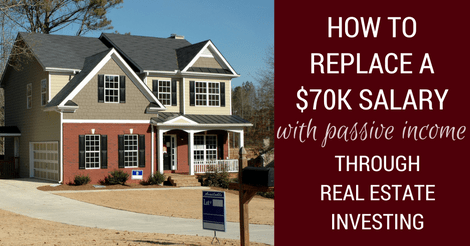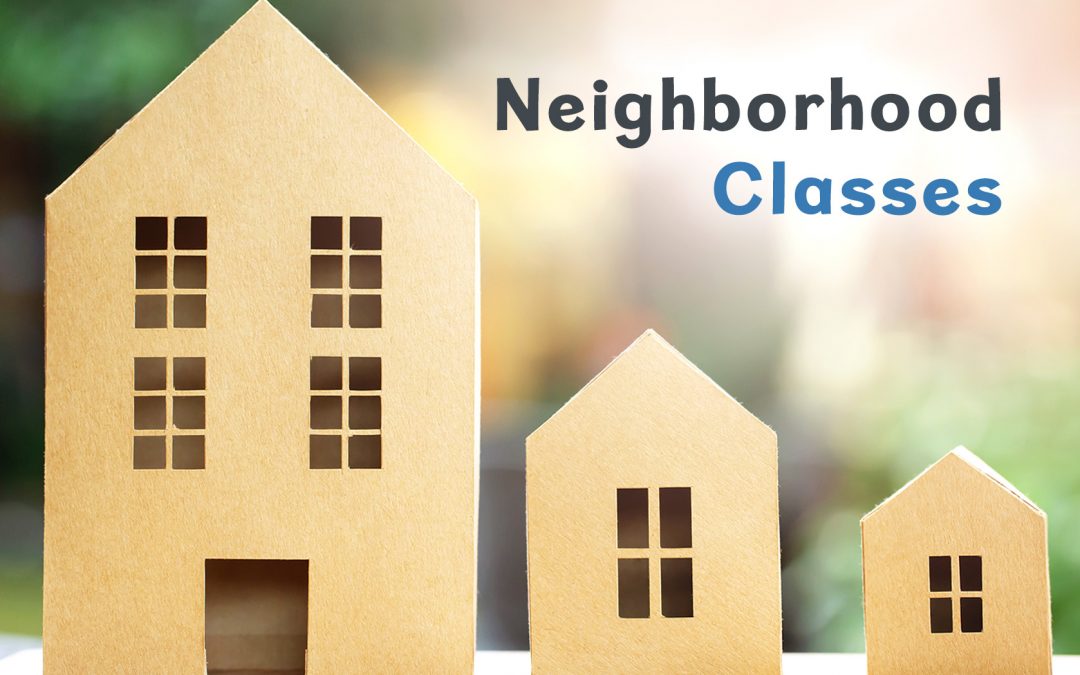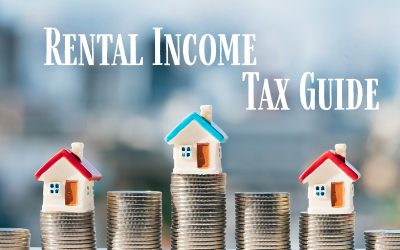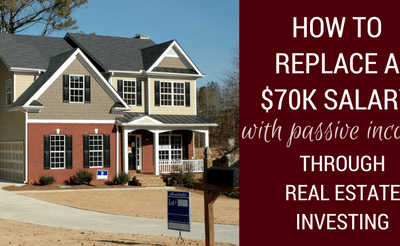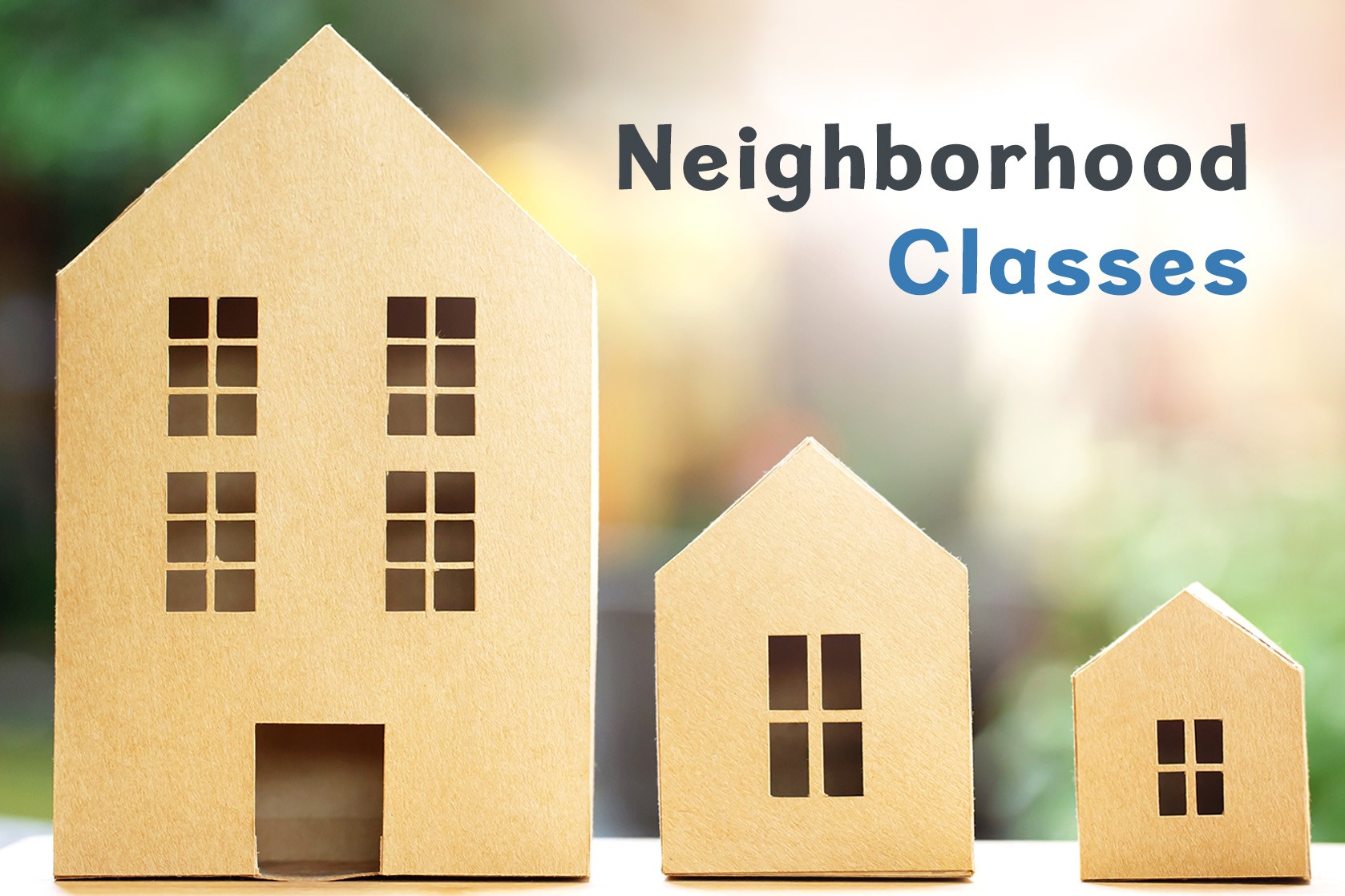
Most rental real estate professionals know that certain locations and properties fit their investing goals better than others, and this is where the different class neighborhoods, A, B, C, and D, can come into play. Each class has its own set of characteristics, pros and cons, as well as profitability factors. Having a basic understanding of this rental property classification system can help investors make better decisions when it comes to choosing which neighborhoods are best for their portfolio.
What are Neighborhood Classes?
Neighborhood classes, often referred to as property classes, are part of a real estate classification system where the letters A, B, C, and D are assigned to specific neighborhoods based on certain criteria. The classification typically encompasses the location and the properties that sit within it. Things such as the physical condition of the properties, home amenities, the location of the neighborhood, crime rate, and more, are factored into the classification process.
For example, a class A property might have outstanding features and sit in an expensive neighborhood, while a C neighborhood contains houses that don’t have all the bells and whistles, and are not as expensive, but are still considered a nice area to call home, and a perfect place to invest.
Investors use this rental real estate classification system to determine if a certain neighborhood and property are right for their budget, ROI expectations, and their overall investing goals.
Property Classifications are More of a Loose Standard
The A, B, C, and D property classifications are basically a loose standard and not a registered set of specifications. This is especially true since each letter grade can vary slightly within different markets, or cities, as well as differ among individuals. For instance, one real estate investor may label a neighborhood as class C, while another may feel it’s clearly a B. Even so, there is a general standard, and this property class identification system is used by the majority of investors for residential and commercial properties. The bottom line is that it’s a helpful standard in the real estate investment community, but with loose guidelines.
Is there a Difference Between “Neighborhood Class” and “Property Class”?
The phrases “neighborhood class” and “property class” are typically interchangeable. Investors use both terms while referring to the same thing – a real estate classification system that rates the location, as well as the homes within it.
Of course, since there are no set rules, you can selectively assign a property class when referencing a piece of real estate without including the neighborhood as a whole. For example, a case where some investors may separate the two phrases is when you find a piece of property, let’s say one that is dilapidated, broken down, and boarded up, which causes it to reflect a D rating, but it’s somehow sitting in a C neighborhood.
Normally, the properties that rest in a specific neighborhood reflect the rating of that neighborhood – so the two phrases can be considered as one and the same, and for the purpose of this article, we will use them interchangeably, with the same meaning.
Factors That Can Determine a Class Rating
There are many elements that go into determining if a neighborhood is classified as an A, B, C, or D – let’s take a look at some of these factors:
Property & Neighborhood Qualities
- The Age of the Homes: The age can be an indicator of the number of renovations or repairs required. Class A neighborhoods may contain the newest homes, with C and D holding the oldest. However, some neighborhoods may include homes that are various ages.
- Condition of the Properties: Investors will look at the overall condition of the homes in the neighborhood to see if they are poorly or well-maintained.
- Renovations: The number of renovations, as well as the extent of repairs that need to be completed to get a piece of property rent-ready, is an important factor. Additionally, if a good number of newly renovated properties are already sitting in the neighborhood, this can potentially upgrade the neighborhood in the near future.
- Landscaping: Not to be confused with gardening, neighborhoods with attractive landscaping that include well-designed front yards with paths, rock features, lovely colors, flowers, shade trees, and the like, can drastically differ in class from those locations that have no overall landscaping design, no trees, and just a bad overall curb appeal.
- Property Amenities: Some class neighborhoods can include amenities that are considered bells and whistles such as central air conditioning systems, high-end flooring, granite countertops, and various upscale features. Other property classes may just have functional features such as manual garage door openers.
- Area Amenities: The area amenities can be a big factor for some because they may be looking to rent a home in close proximity to such places as Starbucks, good grocery stores, restaurants, great schools, golf courses, parks, transportation hubs, and so on.
- Area Jobs: It’s important to factor in if there are good local companies or facilities that can provide steady jobs for the tenants. This can include area hospitals, schools, Fortune 500 companies, or at least major freeways that are nearby that lead to areas that have various places of employment.
- Crime Rate: A big factor in the real estate property class assignment is the neighborhood’s crime rate, with property class D sporting the worst crime and neighborhood class A having the lowest.
Tenant Quality
- Problem Tenants: Some property classes have a higher potential of having problem tenants; those who complain over the slightest thing, or those who trash the property.
- Tenant Income: This can go hand in hand with “area jobs”. If the majority of the tenants in a specific area are employed at high turnover-rate establishments, or mostly unemployed, it can make for unpredictable or unsteady cash flow, and a lower neighborhood class may be assigned. In contrast, neighborhood classes that possess steady blue-collar employment opportunities, large hospitals, and colleges, are more apt to have tenants that stay long-term at their jobs, as well as in their rental, and this all makes for a better neighborhood class.
Rental Property Profitability Potential
- Property Purchase Price: An area’s average purchase price can sometimes be a big indicator of what the neighborhood class is. In general, an investor might not want a super expensive purchase price that can reduce their ROI, which is typically found in class A neighborhoods. Additionally, they may not want an outrageously low home price that might need thousands of dollars in renovations, which is normally found in a class D area. Although investors buy in these areas, many opt for a class that’s in between the two, such as a C class neighborhood.
- Cap Rate/ROI/Cashflow: Investors use what is called a cap rate to evaluate a neighborhood’s possible rate of return. This is accomplished by calculating the following formula for a particular rental property: Cap Rate = Net Operating Income ÷ Current Market Value of the Property. Lower cap rates can mean a lower ROI, and higher cap rates may generate a higher ROI. Generally, Class A neighborhoods have the lowest cap rates, and are therefore a high-risk investment, and vice versa.
- Appreciation: It can sometimes be easy to spot neighborhoods that have no appreciation potential. This can be typical with a class D neighborhood where no one is investing in the restoration of the area. Owning a class C rental that has great appreciation potential is an ideal situation – if it upgrades to a class B, it could mean higher rents and more cash flow.
An Overview of A, B, C & D Neighborhood Classes
Now that we have had a chance to discuss what a neighborhood class is and what characteristics go into determining property classes, let’s take a closer look at each individual class:
Class A
Property class A is considered top-of-the-line, contains all the bells and whistles, and makes for a great place for a tenant to live – if they can afford it.
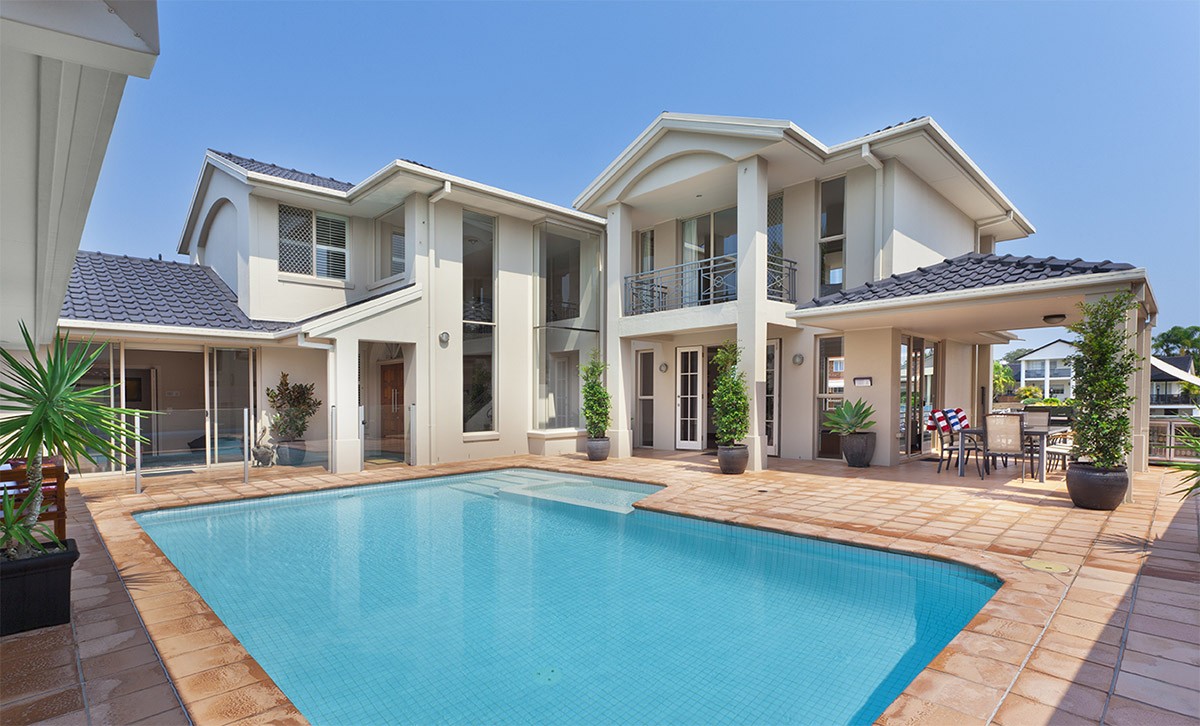
Class A Neighborhood Specifics
The Properties: Class A neighborhoods are typically bigger and feature modern high-end home amenities such as multiple central air setups, SMART home systems, alarms, granite countertops, real wood flooring, and the like, with 3, 4, 5 bedrooms. The homes are normally newer, well-built, and come with a high price tag.
The Location: Class A neighborhoods are well kept with impeccable landscaping, very low crime rate, to none at all, and the area amenities are usually great with golf courses, fine dining, the best shops, entertainment, parks, as well as great school districts.
The Residents: Most residents in a class A neighborhood are white-collar professionals with high-paying careers such as doctors, lawyers, or they own a business, and so on. This provides a cash flow that the investor can rely on.
Profitability: The cap rate is generally lower in an A class neighborhood because the cost to purchase a rental property in this type of neighborhood is expensive. Additionally, when repairs are needed, because the amenities are high-end, this can also become expensive.
Pros and Cons of Investing in a Class A Property
Some pros and cons are shared by many investors, while others may be specific to certain individuals. For instance, one person may love investing in class A neighborhoods, while others keep their distance. Here is a quick summary of a few pros and cons of class A properties to give you a better idea if this type of investment is right for you.
Class A Pros
For most real estate investors, renovations are just part of the normal process. However, for those who don’t want to bother with massive renovations, Class A might be a good fit. This is the case because class A properties are normally newer and well cared for and are typically in such good shape that renovations will be minimal at the time of purchase. Additionally, class A tenants will have higher incomes, and most likely have money in savings, or investments, so rent checks should flow in without interruption. Lastly, if you can afford it, investing in a class A neighborhood will allow you to own an impeccable piece of real estate.
Class A Cons
We grew up learning that anything that receives an A is considered to be the best, whether it’s a test grade, or a restaurant rating. However, when it comes to real estate investing, this might not always be the case. Why? Because although a neighborhood could be assigned an A rating based on certain criteria that places them in the upper tier, there are certain aspects that go along with this type of upper-class neighborhood that might not work out so well for the average real estate investor. Here are a few that are the most common:
- Tenant Complaints: This might not be so obvious up front, but when you invest in an A class neighborhood, you may quickly learn that the tenant can be high maintenance. Because they are paying premium rates, they may want everything to be perfect. With this comes calls requesting things that maybe a class C tenant wouldn’t bother bringing to the landlord’s attention.
- Possible Higher Repair Costs: Class A properties can be bigger, have numerous, as well as expensive amenities such as multiple AC systems, high-quality sprinklers, alarms, a pool, some have heated floors, and so on. With that can come expensive repairs when something goes wrong.
- Cash Flow Generally Not Good: If you’re investing in real estate for a high ROI, then you know that purchasing an expensive property can cut into your profits. Class A neighborhoods have the most expensive properties, may have high property taxes, and can have the lowest cap rates.
- Extended Vacancy Risk: Because the monthly rent price can be much higher with a class A property, it can sometimes take longer to fill a vacancy.
Class B
Property class B neighborhoods are typically known as areas that can easily transition to a class A. Additionally, although I generally prefer class C rental properties, I do own a few pieces of real estate in class B neighborhoods. Let’s take a close look at a few characteristics that may be present in this property class:
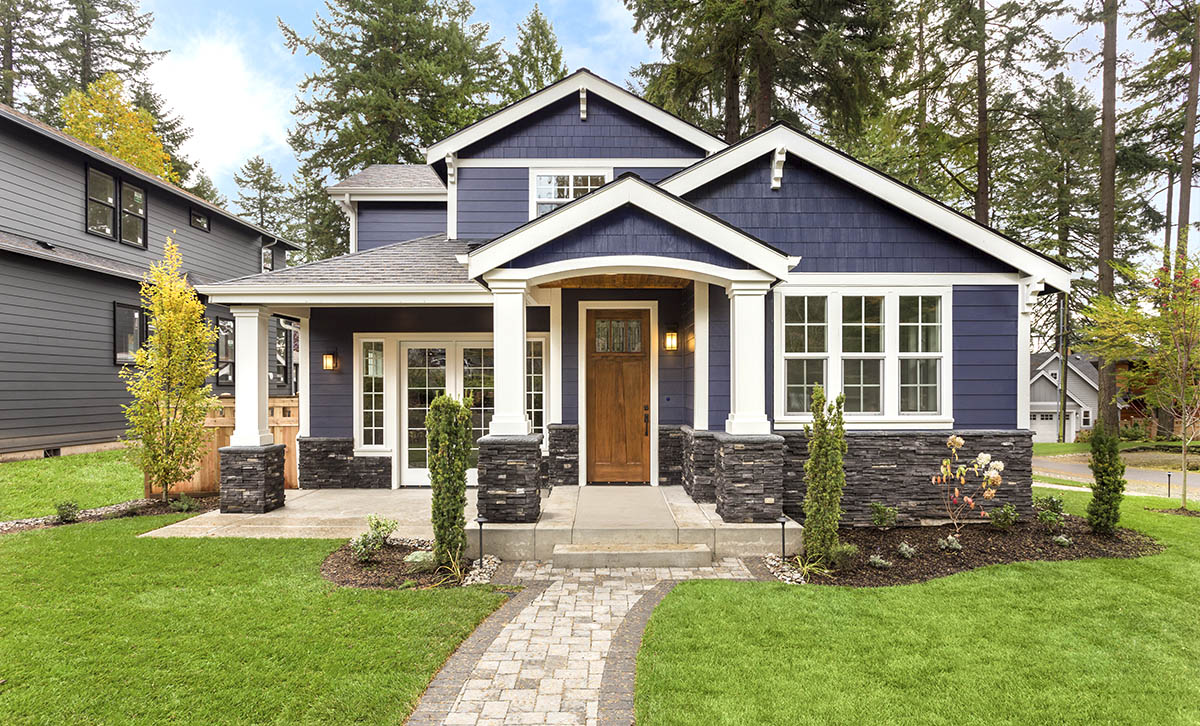
Class B Neighborhood Specifics
The Properties: Property class B homes are generally considered well-built, are a little older, but well cared for. They don’t have all the bells and whistles that an A class property comes with, but may have a few, depending on owner preference. The homes might need some repairs and general maintenance because of the average age of these properties.
The Location: Although class B neighborhoods may not have the same level of upscale landscaping as a class A area might have, a class B location still looks well-kept, clean, and has curb appeal. There are usually good schools in the vicinity, as well as shopping centers, and popular eateries. Class B locations offer lower crime and are considered a comfortable, safe place for renters.
The Residents: Tenants who reside in property class B type areas are generally a combination of working-class families, and a few higher-income earners sprinkled within the neighborhood. They tend to take good care of their home, which keeps the property in great shape.
Profitability: Property class B homes have a good chance of upgrading to an A class neighborhood, which can up the home value, as well as the monthly rent. Additionally, the cap rate for this class is a bit higher than a class A, making it a better choice when deciding between the two class neighborhoods. Normally, a steady cash flow stream is not an issue because it’s a middle to upper-class type neighborhood. However, although class B properties are not as expensive as a class A home, it’s still costly. Therefore, investors should thoroughly run the numbers when thinking about purchasing rental real estate in a B class neighborhood to ensure the ROI you were hoping for is achievable.
Pros and Cons of Investing in a Class B Property
Class B neighborhoods look great and seem like a wise investment, but rental real estate investors should weigh in on the pros and cons before diving in financially. With that in mind, below you will find a brief overview of the advantages and disadvantages of class B investments:
Class B Pros
The most notable advantage of investing in a class B property is that the homes, and the neighborhood they sit in are attractive and well-kept, which can place them on an upward climb to becoming an A class neighborhood. If you decided to sell after a B appreciates to an A, your property could be worth more, providing you with a profit that you can invest elsewhere.
Class B Cons
The most significant disadvantage of buying in a B class neighborhood is that you end up paying more but might not really see that much more of a rent increase than you would if instead invested in a class C neighborhood. This can impact your bottom line and might not be suitable for new investors who have limited funds.
Class C
I consider class C properties to be the bread and butter of my real estate portfolio. I love this class neighborhood and feel it’s a wise location to purchase rental real estate in, no matter what level of investor you are – from a beginner to a seasoned professional. With that said, let’s discuss what a class C neighborhood consists of:
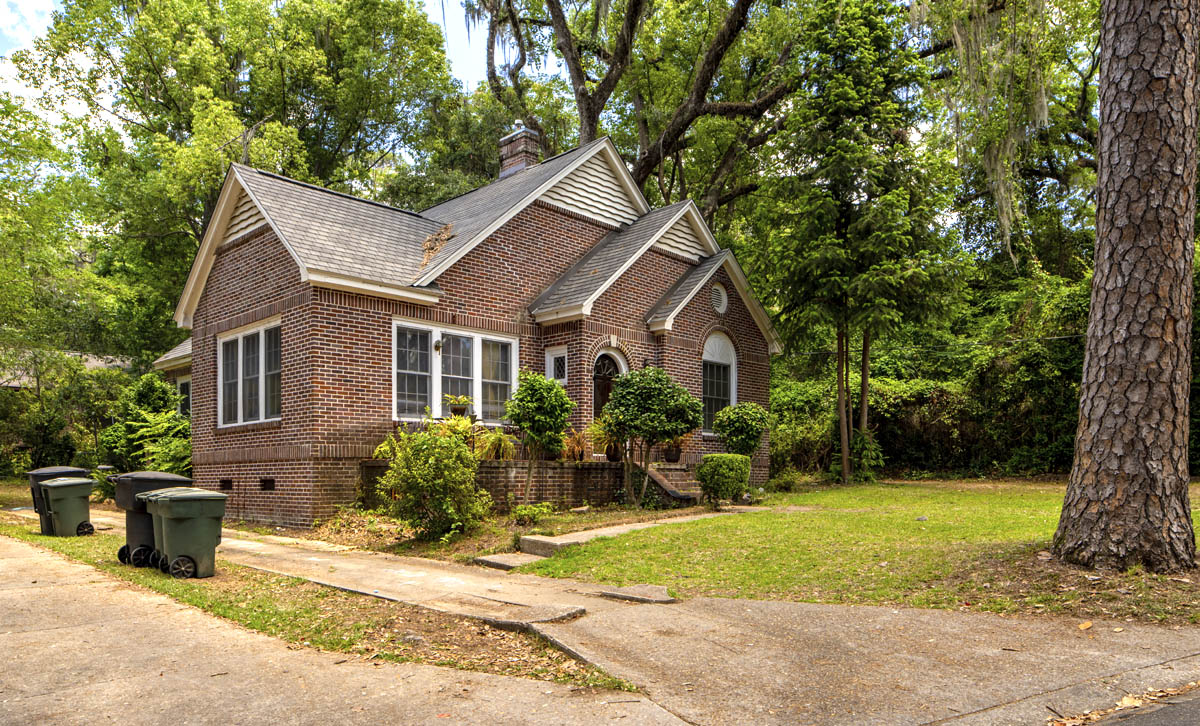
Class C Neighborhood Specifics
The Properties: Class C real estate is typically older, maybe 20 to 40 years, and doesn’t have the finishes that class A or B might have. They won’t have all the bells and whistles, and there are not a lot of moving parts to them. For instance, many class C real estate will have garage doors that are manual, or they may not have a garbage disposal, and so on. These properties may need a lot of repairs and renovations to get them into a rent-ready condition, which is expected and reflects the overall price of the property.
The Location: Class C neighborhoods are not as landscaped and pretty as A and B areas, but they still have an overall nice, or what you can call an average neighborhood appearance. Locations that are classified as C, are generally near bus routes and other important means of transportation. They will include your typical grocery stores, fast food and basic restaurants, and some shops. The crime is a little higher than a class B area, the school districts may not be award-winning, but can still be considered a great place for children to attend.
The Residents: Class C tenants are known to be blue-collar, mid to lower-income earners. They are also considered hard workers. For instance, if you drive up and down the streets of a class C neighborhood in the middle of the day, you most likely won’t see various people hanging out. Why? Because they are at work. These types of workers are also more protected than class A, and maybe B, during a recession. They may hold jobs at local hospitals and colleges that can stand up to economic downturns.
Profitability: As far as ROI is concerned, the low purchase price that comes about because of the age of the property, and the amount of renovations that may need to be done that will add much value, can produce a good return on investment. Class C properties have a great cap rate, which makes them sought after by individuals who are looking for a good rental real estate deal.
Pros and Cons of Investing in a Class C Property
Although most professionals realize that purchasing a rental property in a class C neighborhood is a wise investment, it’s always best to have a well-rounded view by reading over the pros and cons.
Class C Pros
The bottom line is that property class C neighborhoods are practical and affordable. Let’s review a few advantages of owning a class C rental property:
- While class A, or maybe even class B properties may be out of reach or not practical for new investors, they can easily own a lucrative, cash flowing property in a class C neighborhood.
- The tenants are normally hard-working middle-class families who are looking for long-term rentals.
- There is also the possibility that the neighborhood can transition to a class B, which can raise the equity of the property.
- Class C properties present the opportunity to buy an affordable house where value can be added to increase its worth.
Take a look at one of our other articles titled, Why I Love C Class Properties, which gives our take on this neighborhood class.
Class C Cons
A class C neighborhood has the potential to transition into a class D, which would be very undesirable. However, if you do your homework and research the market, you will be able to avoid investing in a particular class C location that is on a downward trend, and instead, purchase in an area that has great potential.
Class D
Most investors tend to avoid class D neighborhoods, and for good reason. There are many issues and few positive aspects of this property class that would push an individual to invest funds in an area that is financially risky.

The Properties: Class D properties are most often older and can be in bad shape. There is no second-guessing if you’re in a D neighborhood; it’s normally very clear by the look of the houses and location. You’ll find boarded up windows, graffiti, and sections of the rooftops may even be missing. Some houses are in such bad condition that they are considered unlivable and have major code violations against them.
The Location: The area itself is just as bad as the properties. D neighborhoods have high crime that includes vandalism, violence, and drug activities. They are typically not close to decent restaurants, coffee shops such as Starbucks, and good shopping plazas. What you might find are small run-down shops, corner liquor stores, laundromats, pawn shops, some fast food places, and the like. Or, you might not find any area amenities for miles.
The Residents: There are, of course, good families in D neighborhoods, but you may also find drug houses, and people who are up to no good. When it comes to financials, the tenants in this area are low-income earners. Additionally, in comparison to a C neighborhood, if you drive down a D street in the middle of the day, you may find people hanging out on the street or on their porches, instead of gone from 9-5 at their place of employment.
Profitability: As you can guess, this is an extremely risky property class to invest in. Vacancies can play a big part in lowering your ROI. Even though the cost of the property may be cheaper due to its age and condition, the repairs and renovations may be beyond expensive. Class D locations could potentially transition to a class C, which would raise your equity and monthly rent, but you would really have to do your research and be 100 percent sure the neighborhood is on its way up.
Take a moment to watch this video that talks specifically about class D neighborhoods:
Pros and Cons of Investing in a Class D Property
There are more cons than pros when investing in a property class D, so let’s dive in and find out what they are:
Class D Pros
Due to the many issues and risks of investing in class D rental real estate, the only pro worth mentioning is that the property prices are extremely affordable, which can make it possible for some investors to buy all the homes on an entire block. If this is done, the investor can renovate and restore the entire block, and single-handedly turn it into a C class neighborhood.
It’s better to do this in locations where the surrounding streets are not going to decline even further, but instead are showing signs of a possible upward climb. If your neighborhood transitions to a C, and you paid D prices, your ROI will be worth the effort.
Class D Cons
We touched on some of the cons above, but here is a summary:
- The low income and unsteady employment that is typically found in a class D location can result in cash flow issues, vacancies, and loss of profit.
- Because D neighborhoods are prone to vacancies, it puts your property at risk for vandalism.
- Crime levels can be so high in these areas that you may have a difficult time finding not only good tenants, but it can also take a significant period of time to place someone at all, which will decrease your ROI.
- The repairs are extensive and may not be worth the investment, considering all the risks and issues that go along with a class D property.
Additional Articles by Morris Invest
In this article, you learned the ins and outs of property classes. This just scratches the surface of all there is to research regarding investing in real estate. Increasing your knowledge base as an investor is important to improving your financial situation. With that said, below, you will find some additional articles that we put together that cover real estate, taxes, equity, and more.
- New investors could benefit from this outstanding article on equity.
- Learn about capital gains taxes so you can keep more money in your pocket!
- Check out our other article regarding neighborhood classification.
- Property investors should have an estate plan, learn how to make it happen.
- Dive into this post on how to value real estate; it’s a great read.
- If you want to buy rental properties, but don’t have the money, you can pool your funds with other investors; take a look at our latest article on the subject for more information.
- Not sure if you should invest in stocks or real estate? Read up on both.
- If you want to learn more about cash flow, check out our article on the topic.
- For those who invest in rental real estate, be sure to dive into this tax-based article.
Once you figure out which property class is right for you, if you need help determining what your freedom number is (the number of rentals needed to become financially free), I recommend utilizing our complimentary Freedom Number Cheat Sheet. Or, dive into our Financial Freedom Academy website to jumpstart your wealth-building strategy.
Invest in the Property Class that’s Right for You and Your Rental Real Estate Portfolio!
Now that you have had a chance to thoroughly read through all the specifications, pros and cons of A, B, C, and D neighborhoods, you may have a better idea of which property class is right for you. At Morris Invest, we have years of experience providing lucrative cash flowing rental properties to our clients, and they are in neighborhood classes that yield the highest ROI.
We invite you to schedule a complimentary call with one of our team members to discuss your real estate goals – it’s the first step in getting on the path to financial freedom.
Before you go, take a minute to view our video below that details neighborhood classes A, B, and C:
Ready To Build Passive Income Through Rental Real Estate?
Ready to talk about your goals? We're here to show you the tools and teach you the process to begin earning legacy wealth for you and your family.

